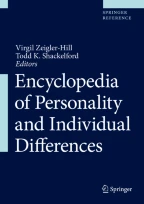1121Accesses
Introduction
InThe Interpretation of Dreams (1900) Sigmund Freud made many preliminary connections between the psychic processes found in the production of dreams and with the production of humor. Encouraged by a correspondence with his friend Wilhelm Fliess, Freud went on to write a book entirely devoted to an examination of the comic, humor, and jokes, entitledJokes and their Relation to the Unconscious (1905). Freud later reflected that this work “considered humor really from the economic view alone,” and remedied this with the short paperHumour (1928), which included a view of humor from his revised structural model of the psyche (p. 1). Freud’s structural model was largely...
This is a preview of subscription content,log in via an institution to check access.
Access this chapter
Subscribe and save
- Get 10 units per month
- Download Article/Chapter or eBook
- 1 Unit = 1 Article or 1 Chapter
- Cancel anytime
Buy Now
- Chapter
- JPY 3498
- Price includes VAT (Japan)
- eBook
- JPY 786498
- Price includes VAT (Japan)
- Hardcover Book
- JPY 786498
- Price includes VAT (Japan)
Tax calculation will be finalised at checkout
Purchases are for personal use only
References
Bion, W. (1983).Attention and interpretation. Lanham: Rowman and Littlefield Publishers, Inc.
Bollas, C. (1987).The shadow of the object: Psychoanalysis of the unthought known. New York: Columbia University Press.
Freud, S. (1900).The interpretation of dreams. The standard edition of the complete psychological works of Sigmund Freud, Vols. 4 and 5.
Freud, S. (1905).Jokes and their relation to the unconscious. The standard edition of the complete psychological works of Sigmund Freud, vol 8, 1–247.
Freud, S. (1928). Humour.International Journal of Psychoanalysis, 9, 1–6.
Freud, S. (1961).The ego and the id. In J. Strachey (Ed. and Trans.), The standard edition of the complete psychological works of Sigmund Freud (Vol. 19, pp. 3–66). London: Hogarth Press (Original work published 1923).
Klein, M. (1975).Love guilt and reparation: And other works (1921–1924). New York, NY: The Free Press.
Premack, D., & Woodruff, G. (1978). Does the chimpanzee have a ‘theory of mind’?Behavioral and Brain Sciences, 4, 515–526.
Rauss, K., & Pourtois, G. (2013). What is bottom-up and what is top-down in predictive coding?Fronteirs in Psychology, 4, 276.https://doi.org/10.3389/fpsyg.2013.00276.
Rizzolatti, G., & Craighero, L. (2004). The mirror-neuron system.Annual Review of Neuroscience, 27, 169–192.
Author information
Authors and Affiliations
Department of Psychology, University of Detroit Mercy, Detroit, MI, USA
Maria Christoff & V. Barry Dauphin
- Maria Christoff
You can also search for this author inPubMed Google Scholar
- V. Barry Dauphin
You can also search for this author inPubMed Google Scholar
Corresponding author
Correspondence toMaria Christoff.
Editor information
Editors and Affiliations
Oakland University, Rochester, MI, USA
Virgil Zeigler-Hill
Oakland University, Rochester, MI, USA
Todd K. Shackelford
Section Editor information
Department of Psychology, Long Island University, Brooklyn, NY, USA
Kevin Meehan
Rights and permissions
Copyright information
© 2020 Springer Nature Switzerland AG
About this entry
Cite this entry
Christoff, M., Dauphin, V. (2020). Freud’s Theory of Humor. In: Zeigler-Hill, V., Shackelford, T.K. (eds) Encyclopedia of Personality and Individual Differences. Springer, Cham. https://doi.org/10.1007/978-3-319-24612-3_588
Download citation
Published:
Publisher Name:Springer, Cham
Print ISBN:978-3-319-24610-9
Online ISBN:978-3-319-24612-3
eBook Packages:Behavioral Science and PsychologyReference Module Humanities and Social SciencesReference Module Business, Economics and Social Sciences
Share this entry
Anyone you share the following link with will be able to read this content:
Sorry, a shareable link is not currently available for this article.
Provided by the Springer Nature SharedIt content-sharing initiative
